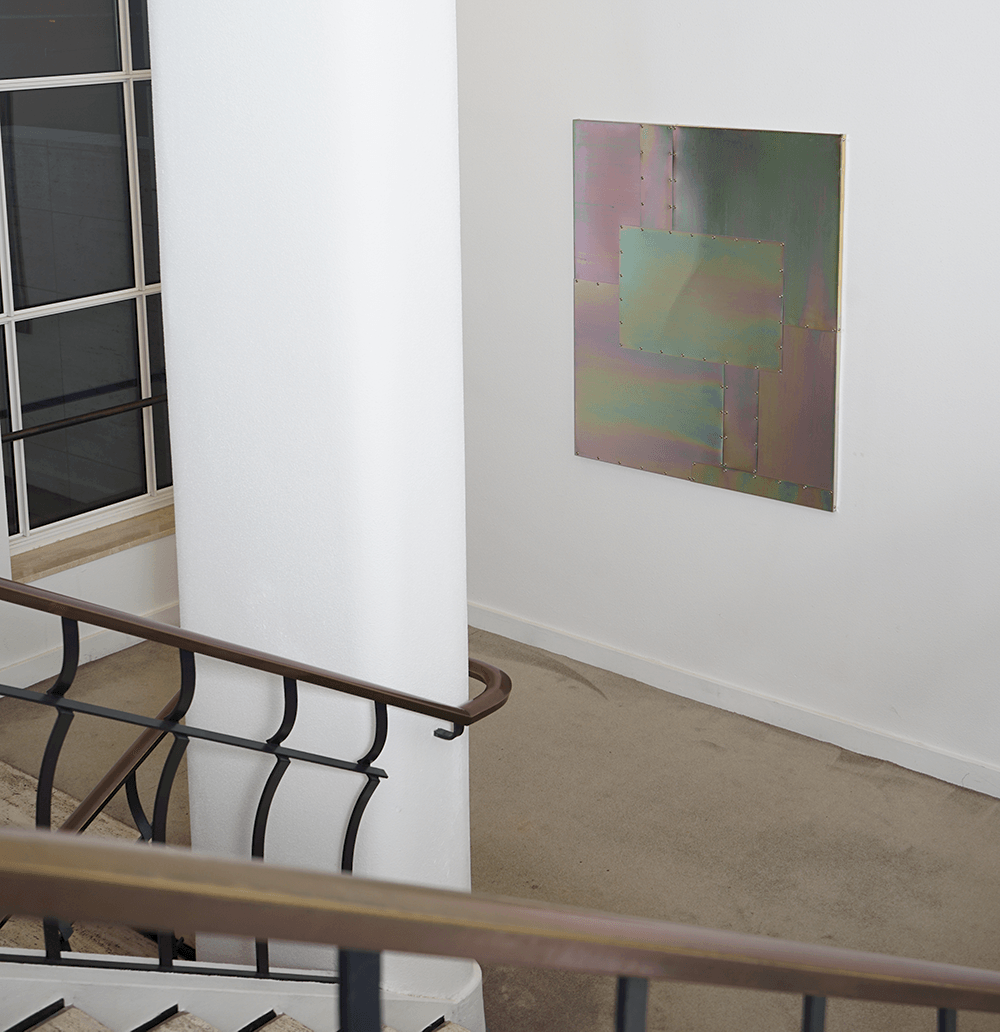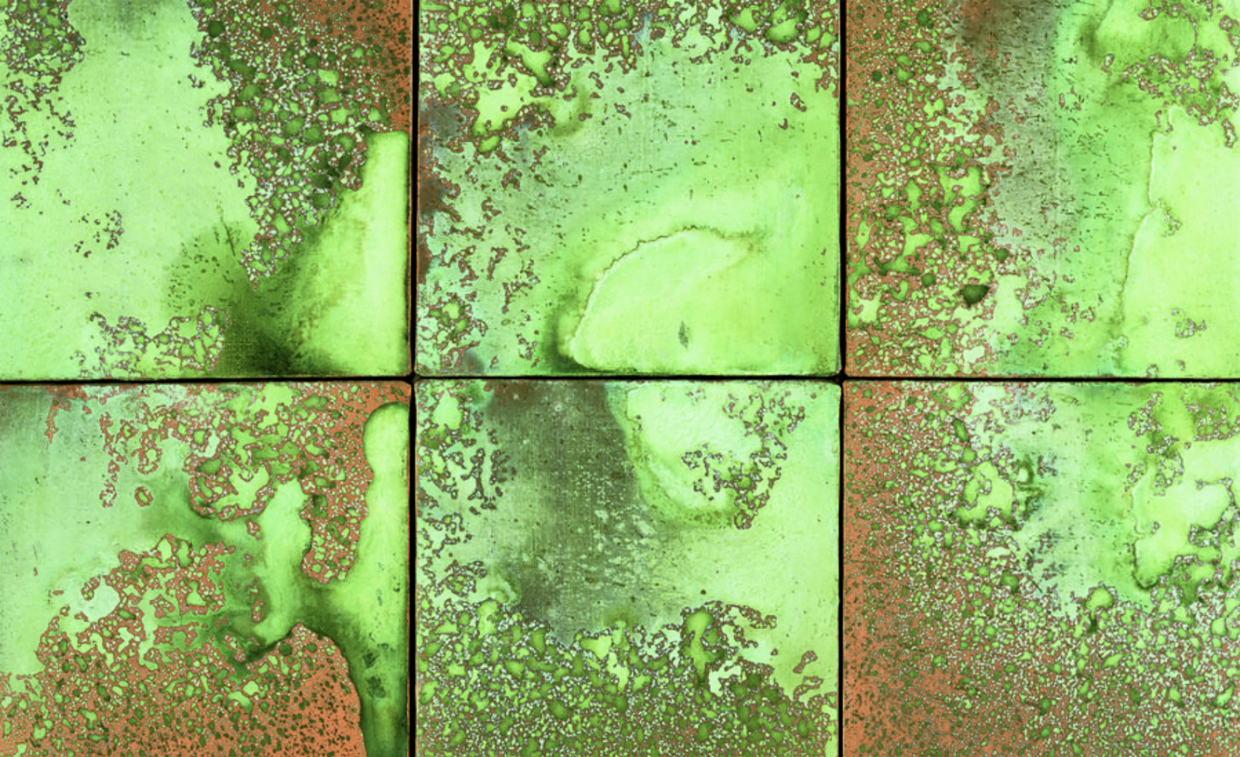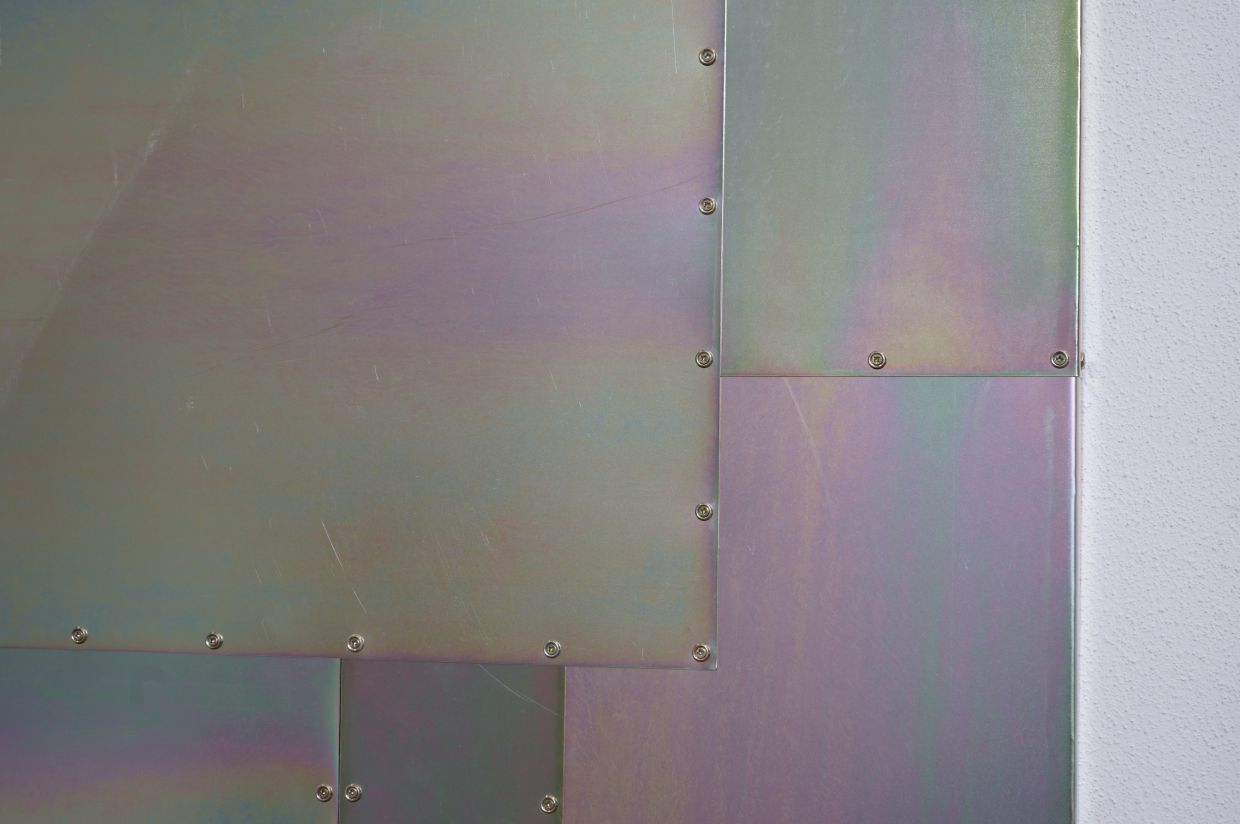

Frank Ammerlaan (b. 1979)
Untitled

Berlin-based artist Frank Ammerlaan first gained recognition with his so-called chemical paintings. The term “chemical paintings” is rather misleading here, as there is no actual painting involved in these works. The method is as follows. An acrylic black canvas is drenched in a basin of chemicals. In a process of mutual rejection and attraction, various erratic and random shapes and colours appear on the canvas. The artwork kind of “paints” itself and self-develops in the basin as an analogue photo would. The resulting pattern looks like an oil stain captured by paint. Spilt oil is one of the most known and visible forms of pollution in our cities and our soil, but it is also one of the most visually captivating. We can stare at the iridescent, rainbow-like image of spilt oil or gas on the roadside or in a puddle for minutes on end. Likewise, children are fascinated by soap bubbles–a similar phenomenon.
Untitled feels like a sequel to Ammerlaan’s chemical paintings. Rather than working with oil-like substances, the artist now works with galvanised zinc plates, kept together with rivets. The metal plates receive the electrolytic treatment several times, resulting in more subtle patterns compared to his earlier works. Here, chance and unpredictability are also crucial elements of the pattern-creating process. When looking at the artworks, lighting has an important role. The metal surface catches and bounces off daylight as well as artificial light in completely different ways at different moments, producing various effects depending on the time of day.
Ammerlaan’s works are reminiscent of the psychedelic liquid slides from the 1960s and 1970s, and despite his works being static, one can’t help but perceive movement in the objects.
Like a contemporary alchemist, Ammerlaan creates patterns with electrolysis and chemically‑prepared substances. In doing so, he follows in the footsteps of great artists such as Andy Warhol and Sigmar Polke. The latter often worked with fluorescent and light-sensitive photo emulsions which he would dilute on the canvas, where they would sometimes evolve for years after the initial creation. Warhol, on the other hand, caused a scandal with his so-called Piss Paintings, for which he asked volunteers to urinate onto copper plates scattered across the floor. The urine’s salt crystals produced beautiful, oxidised patterns. Whimsical, random results were key for Warhol, like we see here with Ammerlaan.

